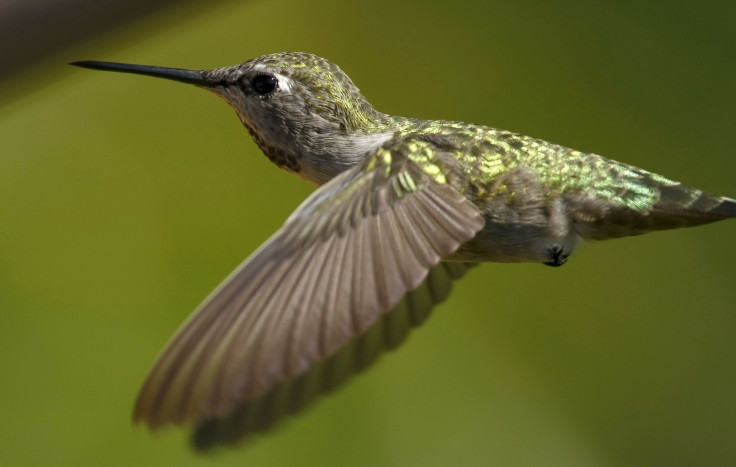Hummingbird Study Reveals 22-Million-Year-Long History That Continues To Evolve And Produce New Species

A new study has revealed that hummingbirds, the smallest on Earth, have a complicated history of evolution spread across millions of years and continue to evolve today, producing various diversified species.
As part of the study, researchers constructed a new family tree of the hummingbird, revealing that the tiny creature with the fastest heart on the planet originated in Eurasia about 42 million years ago before taking over South America 22 million years ago. The bird then spread rapidly across the South American continent, evolved to develop iridescent colors and subsequently moved northward to occupy North America and the Caribbean.
“Our study provides a much clearer picture regarding how and when hummingbirds came to be distributed where they are today,” Jimmy McGuire, a UC Berkeley associate professor and the study’s lead author, said in a statement. “We are not close to being at the maximum number of hummingbird species. If humans weren’t around, they would just continue on their merry way, evolving new species over time.”
There are 338 recognized hummingbird species in the world, but that number could double over the next several million years, the researchers said in the study, published in the journal Current Biology on Thursday.
The researchers constructed the family tree of the nectar-eating bird by using genetic information from 451 birds representing 284 species of hummingbirds and their closest relatives. After analyzing the data, the study concluded that the ancestors of modern hummingbirds existed about 42 million years ago in Eurasia, where hummingbird-like fossils have been found dating from 28 million to 34 million years ago.
According to researchers, after reaching South America about 22 million years ago, hummingbirds quickly expanded and evolved new species represented by nine distinct groups, including topazes, hermits, mangoes, brilliants, coquettes, mountain gems, bees, emeralds and patagona.
The common ancestor of the bee and mountain gem hummingbird groups invaded North America about 12 million years ago, while the Caribbean movement took place about five million years ago.
The scientists cite genetic analysis to show that the diversity of hummingbirds continues to increase today, and in some places, there are more than 25 species of the bird in the same geographic area. According to McGuire, he will continue studying hummingbirds to understand how the birds adapted to a diverse variety of ecological niches and how they learned to function with reduced oxygen at high elevations.
“Everything about hummingbirds is extreme,” McGuire said. “They have this incredible hovering flight, with wing beat frequencies of 60 times per second… they are little machines that run on oxygen at a high rate… It is amazing that evolution can take an animal to such extremes.”
© Copyright IBTimes 2025. All rights reserved.






















